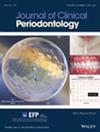Association Between Serum Levels of Perfluoroalkyl and Polyfluoroalkyl Substances and Dental Floss Use: The Double-Edged Sword of Dental Floss Use—A Cross-Sectional Study
Abstract
Background
Although evidence suggests that dental floss contains perfluoroalkyl and polyfluoroalkyl substances (PFASs), it is still uncertain whether the use of dental floss contributes to an increased risk of PFAS exposure.
Methods
We analysed data on serum PFAS concentrations and dental floss usage in a cohort of 6750 adults who participated in the National Health and Nutrition Examination Survey (NHANES) from 2009 to 2020. In our study, we used logistic regression, a survey-weighted linear model, item response theory (IRT) scores, inverse probability weights (IPWs) and sensitivity analysis to assess the potential impact of dental floss usage on human serum PFAS levels.
Results
The analysis of six PFASs revealed that dental floss users had higher serum concentrations of perfluorooctanoic acid (PFOA) compared with non-users, while serum concentrations of other PFASs were lower. Dental floss users recorded a lower level of overall PFAS burden score compared with non-users. Sensitivity analysis showed a statistically significant increase in serum PFOA concentration among dental floss users.
Conclusion
Our findings suggest that the use of dental floss may be associated differently with serum concentrations of specific PFASs. Among a large representative sample of U.S. adults, individuals reporting the use of dental floss had lower levels of serum PFASs overall, with the exception of PFOA, which was slightly elevated. Dental floss is an important oral hygiene tool, and further research is needed to clarify its role in PFAS exposure.


 求助内容:
求助内容: 应助结果提醒方式:
应助结果提醒方式:


